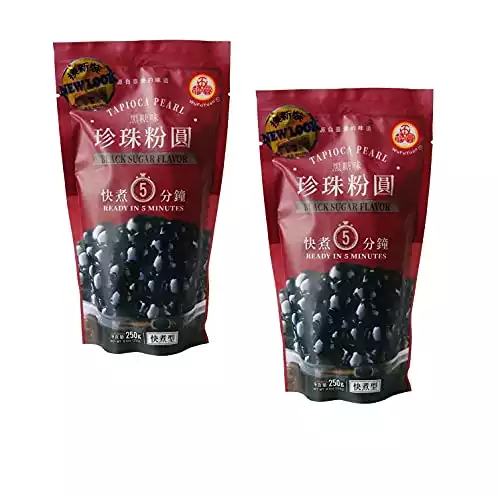While they both have a similar, round texture, sago and tapioca pearls are composed of starches from different plants. Join me as I dissect the differences between these two toppings regarding origin, taste, texture, health benefits, and uses.
Ingredients
Sago
Sago is a starch derived from the pith of a tropical palm tree called Metroxylon sagu, or the sago palm tree. This tree is native to swampy areas of Southeast Asia and New Guinea, typically growing at an elevation of 700 to 1,000 meters above sea level.
Other trees besides sago palms also provide sago, but the sago palm is the most widely used tree to produce this ingredient.
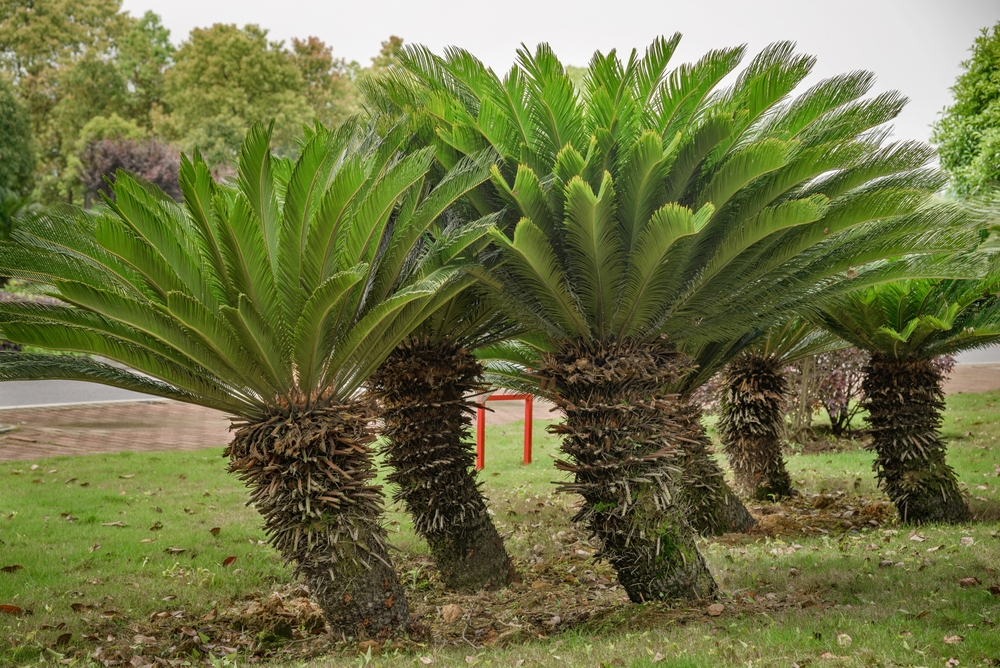
Tapioca Pearls
Tapioca pearls are made from the cassava root, a starchy tuber plant originally found in South America but now grown worldwide across tropical regions.
The extract is molded into flour, soaked, stained, and rolled into small balls or pearls.
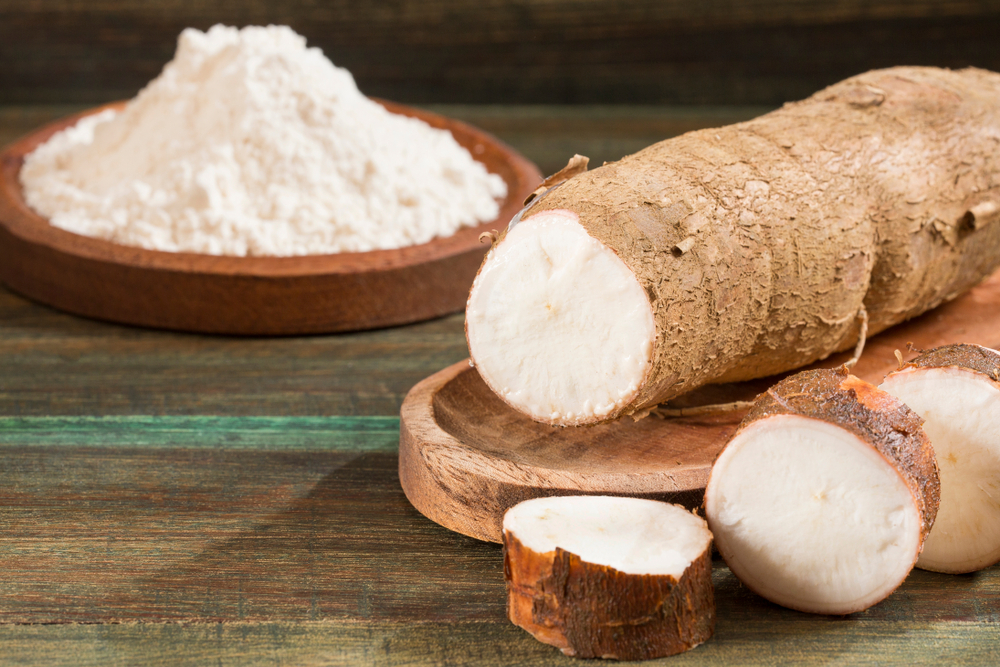
Taste and Texture
Sago
Cooked sago has a slightly neutral taste, but its absorbent properties allow it to take the flavor of other ingredients it’s mixed with. Its texture is soft, moist, and chewy.
Real palm sago is unrefined starch that ranges in colors from brown to pink. Lighter colors are generally more desirable because they look more presentable, but the taste doesn’t vary across hues.
Tapioca Pearls
Just like sago, the taste of tapioca pearls is neutral and takes on the flavor of the surrounding ingredients. Cooked tapioca balls have a more rubbery consistency compared to sago. They’re also slightly larger than sago balls.
These pearls are usually cooked with brown sugar, which gives them a distinctly darker color. Additionally, most boba tea shops soak the tapioca pearls in brown sugar syrup to make them even sweeter.
Typical Uses
Both starches, tapioca and sago, are gluten-free ingredients that can be used to thicken soups and stews. They are also found in various Southeast Asian desserts and beverages—boba tea being one of them.
Sago
Sago is popularly found as an accompanying carbohydrate in savory dishes and soups with meat and fish. It’s also a common ingredient in a variety of Asian desserts. For example, sago pudding is a dessert that contains coconut milk and cream, with sago as one of its key ingredients.
Standalone recipes are also possible, with many cracker and bread recipes featuring this extracted palm pith as its main ingredient and a substitute for flour.
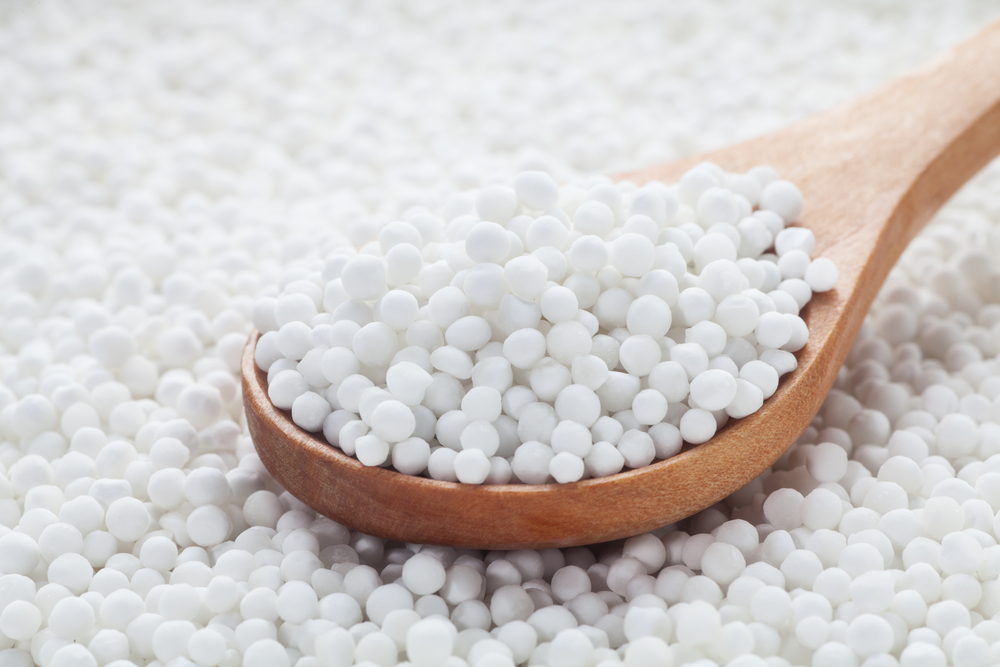
Tapioca Pearls
Tapioca pearls are the most popular bubble tea topping. Bubble tea is a Taiwanese beverage made of black or green tea, dairy or vegan milk, and this beloved chewy topping.
Tiny tapioca pearls are used in a variety of desserts as well, most notably as a substitute for the harder-to-find sago, thanks to their starchy properties.
One example would be mango tapioca—an Asian dessert that combines tapioca pearls, condensed milk, mangoes, and coconut milk to form a sweet treat. Another common way to use small tapioca pearls is in tapioca pudding.

Which Is Healthier: Sago or Tapioca?
Sago pearls and tapioca starch balls are both high in calories and don’t have much to show in terms of nutritional benefits due to the lack of vitamins and minerals. However, there are a few advantages to these starches.
- Is a good source of antioxidants
- Helps promote healthy gut bacteria
- Reduces heart disease risk
- Is good for digestive health
- Has no saturated fat
- Is easy to digest
That said, there have been some studies that have shown that sago is slightly healthier compared to tapioca.
Can You Substitute Sago for Tapioca Pearls in Bubble Tea?
Yes, sago is a perfectly viable substitute for tapioca pearls in bubble tea. Both options have round, chewy, absorbent properties that make them excellent bubble tea toppings.
The reason why tapioca pearls are more popular as a topping is two-fold. One, tapioca is a more accessible ingredient compared to sago due to the latter’s lengthy means of production. Two, people are more familiar with the texture and look of tapioca pearls.
If you’re willing to step out of your comfort zone and try something new, you may find that sago is just as enjoyable.



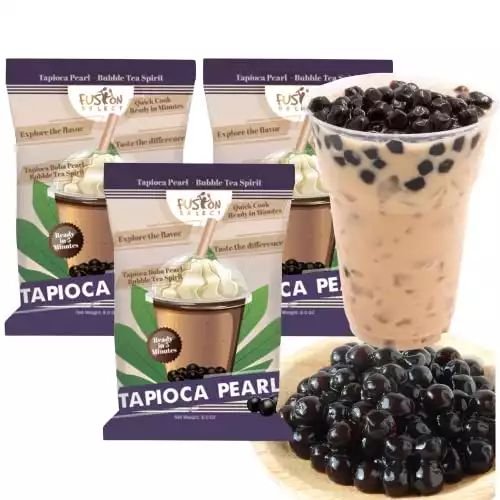
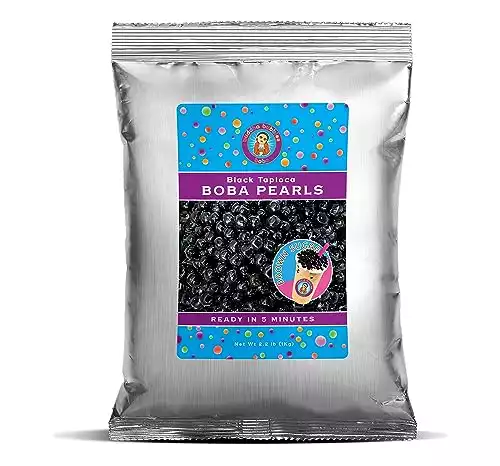
![Sago vs Tapioca Pearls: 5 Main Differences 7 Premium Grade Black Tapioca Pearls (6.6 lbs) [Bubble Tea]](https://bobabuddha.com/wp-content/uploads/2023/12/61Q0vEDQm9L._SL500_.webp)
